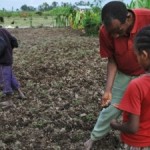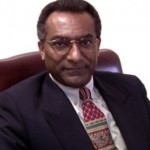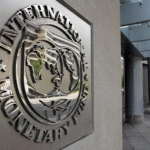 Evidence clearly suggests that the economy is failing to provide basic necessities to the Ethiopian people, despite the government claims of economic growth. Officials need to examine and discuss the quality of life beyond the GDP growth.
Evidence clearly suggests that the economy is failing to provide basic necessities to the Ethiopian people, despite the government claims of economic growth. Officials need to examine and discuss the quality of life beyond the GDP growth.
Kefeyalwe weldegiorgies (not his real name), a thirty-four-year-old physics teacher at one of the high schools in Harer, has been in the teaching profession since 2001. If you knew him four or five years ago, you likely remember him as the best teacher who used to tell everyone how much he loved teaching. This is understandable, as he was one of only a few among his fellow staff members admired by their pupils for their teaching methodology and good manners.
Kefeyalwe is a completely different chap today. He has lost his appetite for going to work and meeting his professional obligations. For him, there was no correlation between his willingness to teach and his salary earnings even during the first few years of his career. Now, it seems that those “good old days” are gone. “Imagine living on a monthly disposable income of Birr 1754 and worrying about my professional competency,” he grumbled.
Five years ago, Kefeyalwe was able to cover at least his monthly expenses for basic necessities with a salary of Birr 1250. “I also used to save some amount of it,” he explained. Despite the fact that his salary was raised three times over the last five years, he is no longer able to cover his basic necessities today, let alone save for the future. “The question is not how to save but how to survive.”
Being paid this sum of money may seem a luxury to the majority of Ethiopians; many wish they could get even half of it. Unfortunately, the tangible facts suggest otherwise. The real value of such an amount indicates nothing more than the face value of the currency. The prices of major commodities bundles have tripled in recent days and significantly devalued the Birr.
The high price trend that the country is currently experiencing is causing the living standards of many people to plummet to the worst possible conditions. 39 percent of people were classified as living in extreme poverty, on a $1.25 per day threshold. That is the old story. A “new” day has arrived to polish the old threshold, at least theoretically. Even worse, a new study tells us that even Ethiopian professionals like Kefeyalwe now also fall below the minimum living standards.
The new poverty index developed by Oxford University and the United Nations Development Program has come up with new findings. The Multi Dimensional Poverty Index (MPI), which measures multidimensional aspects of poverty, shows that 90 percent of the Ethiopian people are today living in extreme poverty.
The MPI is intended to assess the nature and intensity of poverty at the individual level according to three critical dimensions, namely education, health and standard of living. According to the study, Ethiopia has the lowest performance indices in all three aspects and said to be the poorest of the poor. For the last two decades, the “$1.00 per day” and then the “$1.25 per day” thresholds have been highly criticized for focusing solely on income. Economists have argued that family income cannot be the only determinant, whether that particular family is extremely poor or not. As Nobel Prize winning economist Amartya Sen clearly points out, using income as a major determinant to measure human progress offers a narrow view of development. Simply earning more than $1.25 per day cannot, for instance, clearly show whether children have access to school and health care.
Considering those critiques, the new index tries to address both individual and national poverty levels by using 10 indicators. Thus, educational access for children, health services for infants and mothers and many other dimensions are assessed when measuring poverty levels. More than answering the usual “who is poor” question, it also tells us how they are poor. The MPI, estimates the poverty levels across 104 developing nations; the greater the MPI value, the greater the level of poverty in a country. This value reflects both the incidence (percentage of people who are poor) and intensity of poverty–the sum of weighted deprivations that each household faces at the same time. Accordingly, the MPI value of Ethiopia is 0.58. This value is even greater than that of neighboring countries such as Somalia and Kenya.
At home, however, the music is different. According to Ethiopian government statistics, poverty levels have been decreasing as a result of the “double digits economic growth” rhetoric. It has been proclaimed over and over again that the quality and access to basic education and health services have improved. Yet the MPI indicates that school enrolment in Ethiopia is far below the sub-Saharan average. 84.9 percent of school-aged children are not attending schools in years one to eight; 81.5 percent are further deprived of schooling, unable to complete even five years of education. The living standard of the majority of Ethiopians is also declining. The MPI indicates that 94.1 percent of people are poor and deprived of at least three of the living standard indicators–primarily assets, cooking fuels, electricity, floor (a household is said to be deprived in floor if the household has dirt, sand or dung floor.. for instance, 87.5 people of Ethiopia is said to be poor and deprived in floor), water and sanitation.
Consequently, 54.3 percent of the people lack access to clean water, while 89.8 percent cook using dung, wood or charcoal. Evidence clearly suggests that the economy is failing to provide basic necessities to the Ethiopian people, despite the government claims of economic growth. Officials need to examine and discuss the quality of life beyond the GDP growth. Rather, they prefer to stick with their double-digit rate projections, although no research can be seen to support their claims. In the meantime, the quality of life for Kefeyalwe and his colleagues is diminishing, and most of them are joining the poor majority. This begs the question: who will comprise the intended middle class group if Kefeyalwe is slipping behind?




























Join Conversations